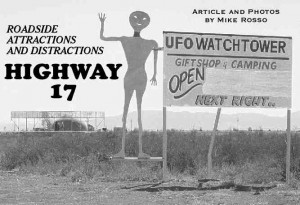Essay by Stephen J. Lyons
Environmentalism – October 2002 – Colorado Central Magazine
These days of diminishing resources call for drastic measures. In my own household we have cut down on car trips. Entire days go by without firing up the gas-combustible engine. We recycle vigorously. When non-essential appliances break, we don’t replace them. We don’t flush the toilet after each use either. The air conditioner stays idle long past the point of comfort, prompting one visitor to comment, “How can you people live this way?”
The answer is easy: “It’s the least we can do.”
So why aren’t so-called “environmental magazines” practicing drastic low-tech methods of publishing? Why don’t they practice what they preach? Do their mission statements match their realities or are they simply growth industries for consultants, editors and designers?
This should be a time when coffee-table style magazines like Orion (does it still arrive wrapped in plastic?), Audubon, Sierra and Nature Conservancy (some of which have bought and published my work) switch to 100 percent soy ink printed on paper stock similar to that of The Progressive Populist, The Nation, your daily newspaper, High Country News or your neighborhood shopper. Instead, the multicolor, slick, perfect-bound tomes seem to be spiraling in a direction that speaks more about marketing than improving the planet’s health.
The house organ of The Nature Conservancy, one of my favorite organizations and one of the few I contribute money to, recently underwent a fancy makeover. The quarterly (“printed on recycled paper”) arrives poking out of the mailbox in an oversized dimension with color photos of fragile places the Nature Conservancy is saving. Judging by the letters to the editor in its Summer 2002 edition, the change was met by a mixed reaction.
“Your new magazine format is, in a word, magnificent. I am preparing to send an additional gift of $1,000,” bubbles a happy donor from Pennsylvania. But one reader from New York writes, “I am a longtime contributor to the Conservancy; I don’t need or want a glossy magazine. In fact, if it keeps coming, I will cease to be a contributor. I mean it!”
Perhaps more disturbing in the new-look Nature Conservancy is the back-page advertisement announcing “the proud sponsor of The Nature Conservancy.” That would be General Motors, the maker of such gas hogs as the 345-horse power Cadillac Escalade SUV and the 5,700-pound Hummer.
Do editors and fund-raising consultants realize the hypocrisy of advertising atmosphere-choking vehicles and the resource-draining trips the ads promote? Although many of these auto ads are aimed at environmentally conscious consumers who love the outdoors, pollution is politically neutral.
That is, the fact that you are an environmentalist driving a Isuzu or Subaru, for example, with the correct bumper stickers (like the one that smugly proclaims “My Other Car is a Bicycle”), that you belong to the Sierra Club, the National Audubon Society, or that you listen to songs about saving the rain forest while you drive alone along a river, makes no difference as to the amount of carbon spewed into our air. In his book, The End of Nature, Bill McKibben reports that an average American car driven 10,000 miles a year will release its weight in carbon for that year: roughly 1 ton.
And each time the editorial offices of nature magazines upgrade computer systems, another open pit mine is dug a bit deeper to extract the five dozen different minerals needed to manufacture a computer.
One of those minerals is coltan, used in cell phones, computers and automobiles. Because of the popularity of electronics, its price has risen from $30 a pound to $445 a pound, prompting thousands of miners to pour into Africa’s Democratic Republic of Congo. Unfortunately the mining area is also home to the lowland gorilla.
Because of poaching by miners, 80 to 90 percent of the gorillas have been killed. Four years ago, there were 17,000 gorillas in the country. There are perhaps 2,000-to-3,000 gorillas left today. There is no pretty picture to convey this agony.
By the way, the above was reported by Joan Lowy, a reporter with the Scripps Howard News Service. I read all about it in my dull-looking, local newspaper, which sits not on my coffee table, but in the recycling bin.
Now, to what organization do I send money to save the gorillas?
Stephen J. Lyons is a contributor to Writers on the Range, a service of High Country News in Paonia, Colorado (hcn.org). He lives in rural Illinois.

